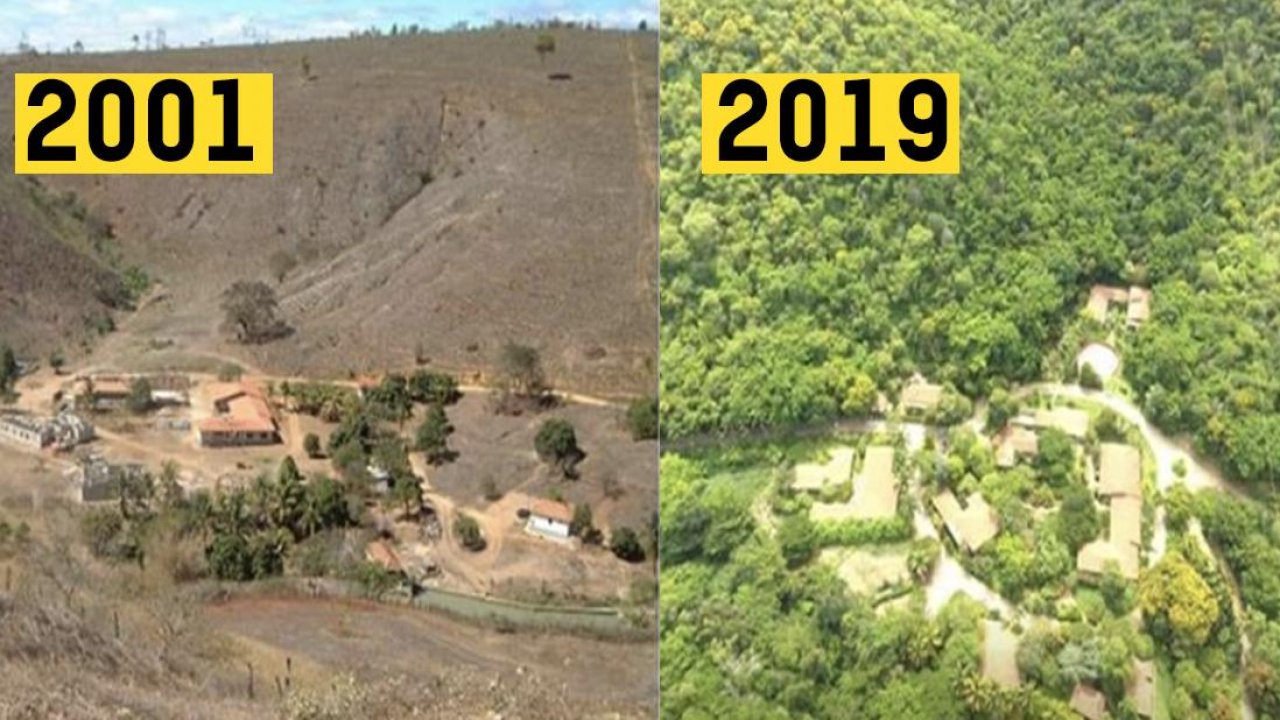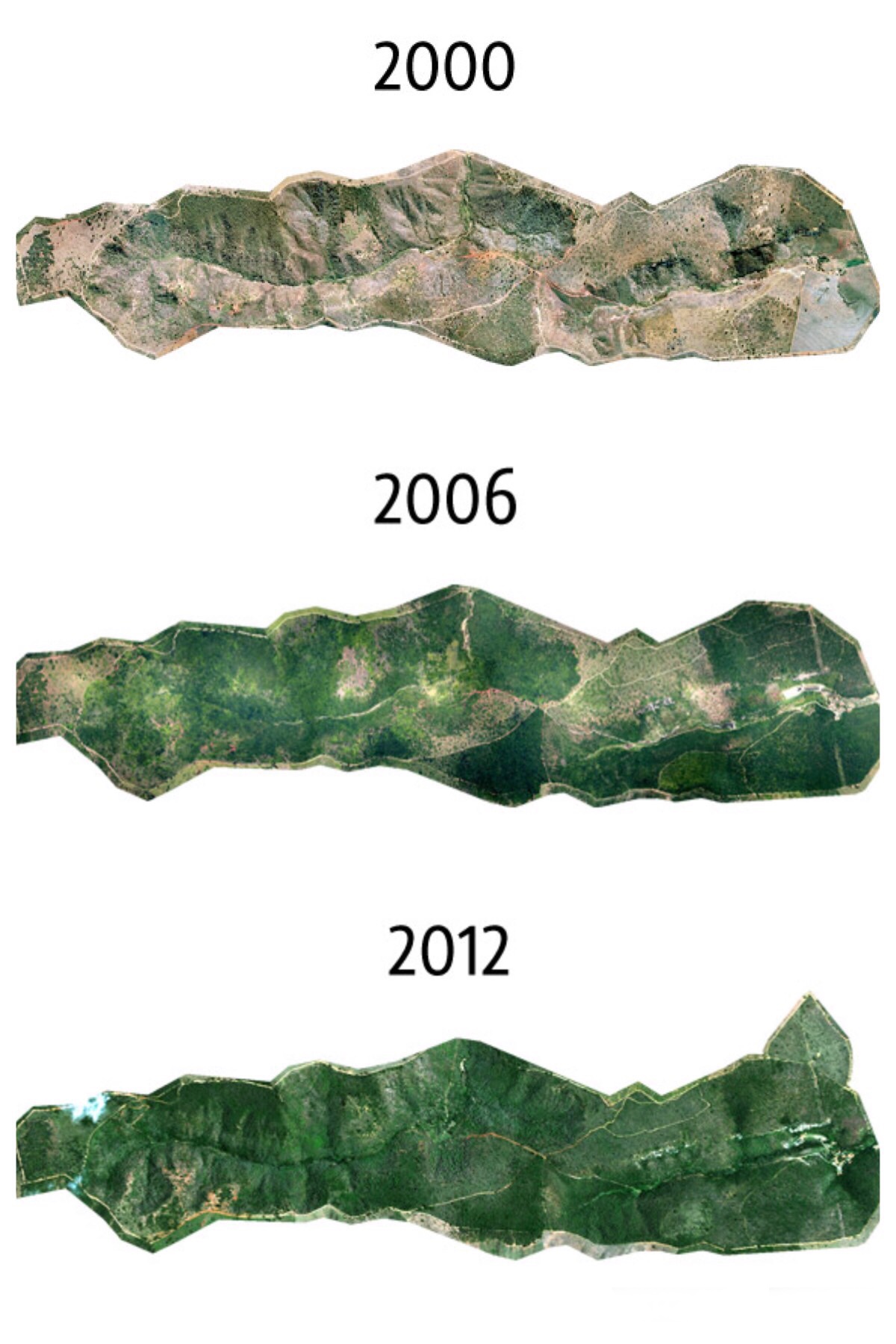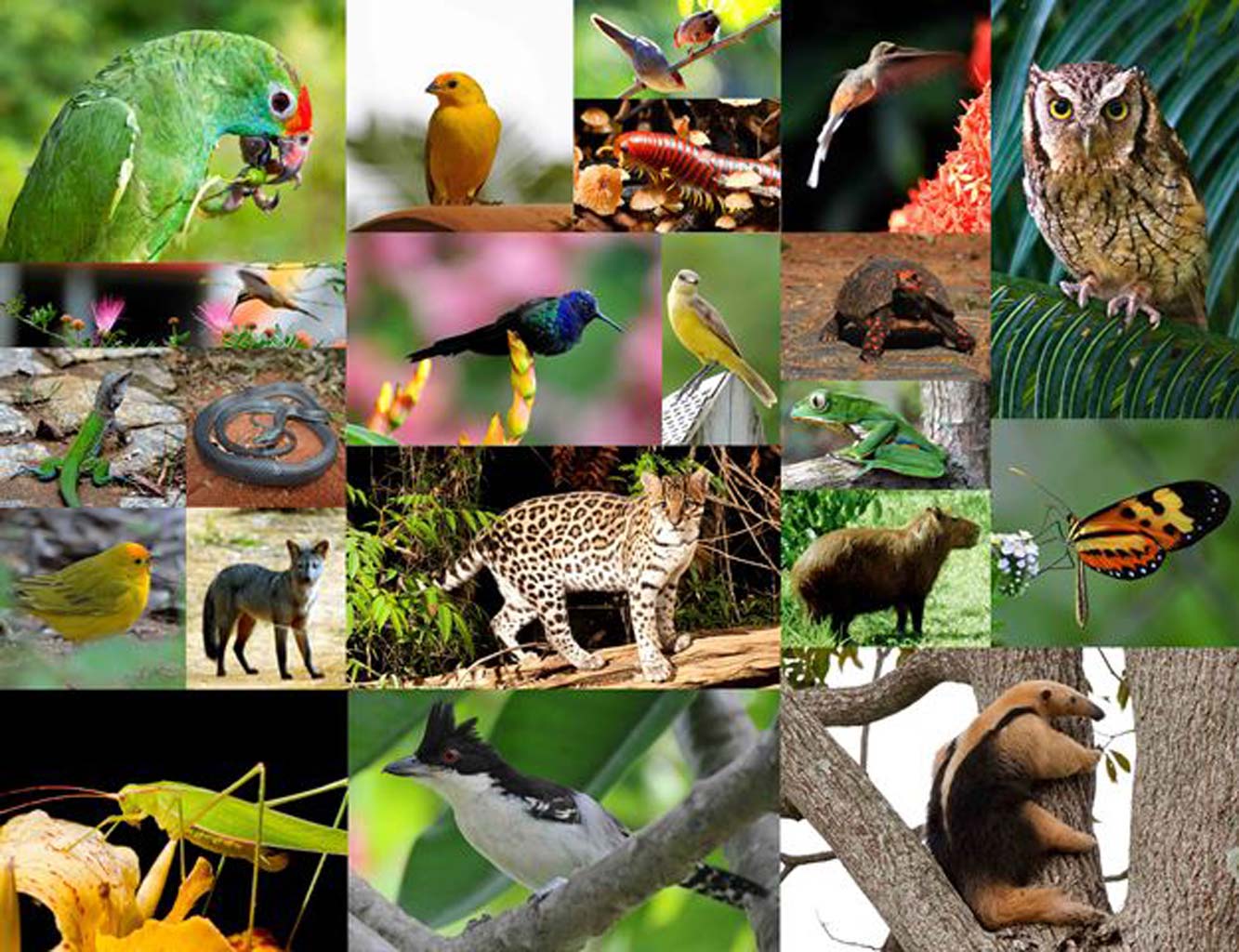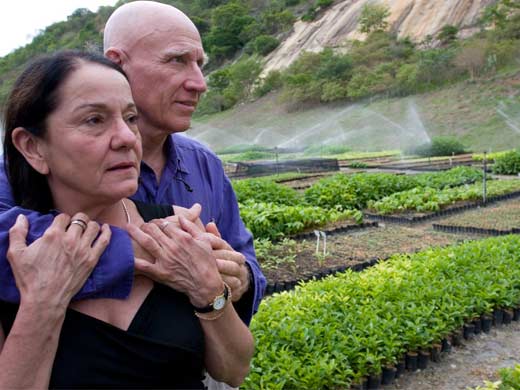
The mammoth project has planted saplings of more than 290 species of trees and seen the return of many species of birds, mammals, amphibians, reptiles, and insects.
The project serves as a beacon to awaken awareness of the need to restore and conserve forest land
This project is the result of an ambitious initiative taken in the late 1990s by renowned Brazilian photographer Sebastião Salgado and his wife Lélia Deluiz Wanick Salgado. Confronting environmental devastation in and around a former cattle ranch bought from Salgado’s family near the town of Aimorés, in Brazil’s state of Minas Gerais, they decided to return the property to its natural state of subtropical rainforest. The ongoing results are truly amazing.
The dream of planting a forest in Brazil gave birth to the Instituto Terra
When celebrated Brazilian photographer Sebastião Salgado took over family land in the state of Minas Gerais, instead of the tropical paradise that he remembered as a child, he found the trees cut down and the wildlife gone.
He was devastated. It was 1994 and he had just returned from a traumatic assignment reporting on the genocide in Rwanda.
“The land was as sick as I was – everything was destroyed,” Salgado told The Guardian. “Only about 0.5% of the land was covered in trees.”
Salgado’s wife, Lélia Deluiz Wanick Salgado, had the idea to replant the forest. When they began to do that, all the insects and birds and fish began to return.
Salgado and his family recruited partners, raised funds and, in April 1998, they founded the Instituto Terra and have now planted more than 2 million trees, totally transforming the environment.
In doing so, Salgado says he has found one answer to climate change – as well as creative inspiration.
“Perhaps we have a solution. There is a single being that can transform CO2 to oxygen, which is the tree. We need to replant the forest. You need forest with native trees, and you need to gather the seeds in the same region you plant them, or the serpents and the termites won’t come. And if you plant forests that don’t belong, the animals don’t come there and the forest is silent.
“We need to listen to the words of the people on the land. Nature is the earth and it is other beings and if we don’t have some kind of spiritual return to our planet, I fear that we will be compromised.”
Source: InstitutoTerra
Continued below…

The Instituto Terra committed itself to the recovery of the 1,502 acres of rainforest in the Bulcão Farm in Aimorés, Minas Gerais The farm was completely devastated when, in 1998, it received the title of Private Natural Heritage Reserve (PNHR). The former cattle ranch originally covered 1,740 acres. The first planting was carried out in December 1999, and since then, year after year, with the support of important associates, it has been possible to plant over two million seedlings of more than 290 species of trees, recreating a forest of arboreal and shrub species native to the Atlantic Forest. Source: Institutoterra.org
A beacon to awaken environmental awareness of the need to restore and conserve forest land
From the moment they founded the Instituto Terra, Lélia Deluiz Wanick Salgado and Sebastião Salgado, saw the institute as serving as a beacon to awaken environmental awareness of the need to restore and conserve forest land.
Recognising education and research as key components of this strategy, on February 19, 2002, the Instituto Terra created the Center for Environmental Education and Restoration (CERA).
Its mission is to contribute to the process of environmental restoration and to the sustainable development of the Atlantic Forest, with special emphasis on the Basin of the River Doce.
Through CERA, new technologies are shared, throwing fresh light on existing models of development. The ultimate aim is to engage new participants in the battle to achieve sustainable development.
By December 2012, over 700 educational projects had been developed, embracing 65,000 people in more than 170 municipalities of the Valley of the River Doce, covering both the states of Espírito Santo and Minas Gerais. Some projects have reached as far as the states of Bahia and Rio de Janeiro.
Source: InstitutoTerra.org

Fauna are returning: many species that were disappearing now find a secure home in Balcão Farm Among birds, 172 species have been identified, of which six are in danger of extinction. There are 33 species of mammals, two of which are in the process of world-wide extinction (classified as ‘vulnerable’). There are also 15 species of amphibians; 15 species of reptiles; and 293 species of plants. Source: Institutoterra.org
Native species of trees were chosen with the aim of creating a forest of high biomass and diversity
The Instituto Terra committed itself to the recovery of the 1,502 acres of rainforest in the Bulcão Farm in Aimorés, Minas Gerais. The farm was completely devastated when, in 1998, it received the title of Private Natural Heritage Reserve (PNHR). The former cattle ranch originally covered 1,740 acres.
The first planting was carried out in December 1999, and since then, year after year, with the support of associates, it has been possible to plant over two million seedlings of more than 290 species of trees, recreating a forest of arboreal and shrub species native to the Atlantic Forest.
At present, just 10% of the PNHR remains to be restored. And the process continues, with the goal of increasing the numbers of native Atlantic Forest species and genomes in the region.
By halting the erosion of the soil, replanting the ground cover at the PNHR Bulcão Farm is fostering a revival of the farm’s water resources – both in quantity and quality.
The eight natural springs on the farm have come alive and, even in times of drought, they now flow at a rate of some 20 litres (5.3 gals) per minute.
Native species of trees planted in an area that was completely degraded have been chosen with the aim of creating a forest of high biomass and diversity.
Fauna are returning: many species that were disappearing now find a secure home in Balcão Farm.
- Among birds, 172 species have been identified, of which six are in danger of extinction
- There are 33 species of mammals, two of which are in the process of worldwide extinction (classified as ‘vulnerable’)
- There are also 15 species of amphibians; 15 species of reptiles; and 293 species of plants.
Source: InstitutoTerra.org

Salgado’s wife Léila had the idea to replant the forest From the moment they founded the Instituto Terra, Lélia Deluiz Wanick Salgado and Sebastião Salgado, saw the institute as serving as a beacon to awaken environmental awareness of the need to restore and conserve forest land. Source: Institutoterra.org
About Sebastião Salgado
For the last 45 years, award-winning Brazilian social documentary photographer and photojournalist Sebastião Ribeiro Salgado has been traveling the continents in the footsteps of an ever-changing humanity. He has witnessed and recorded the major events of our recent history; international conflicts, starvations and exodus.
Salgado has traveled to over 120 countries for his photographic projects. Most of these have appeared in numerous press publications and books. Touring exhibitions of this work have been presented throughout the world.
10 things you can do to save the rainforest
PICK ONE EASY STEP TO SAVE THE RAINFOREST: Sure, governments can create laws to stop deforestation, but what can you do save the rainforest? It turns out quite a bit. Choose just one thing on this list and start making a difference. Over time you can add more actions and make an ever bigger difference.